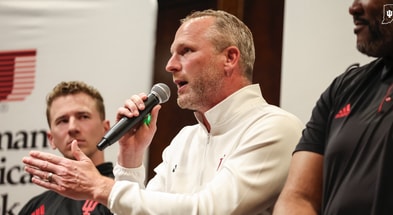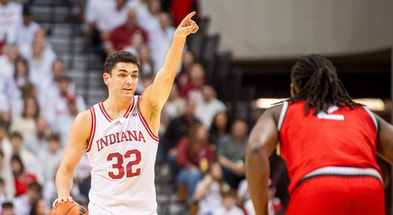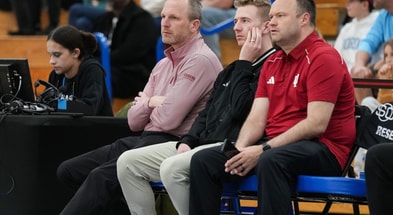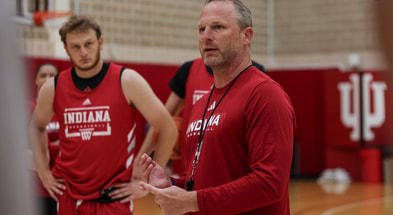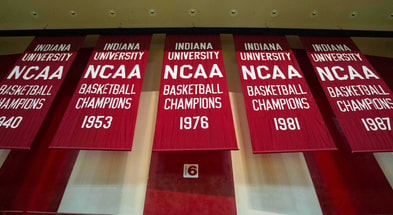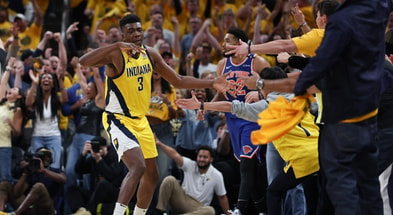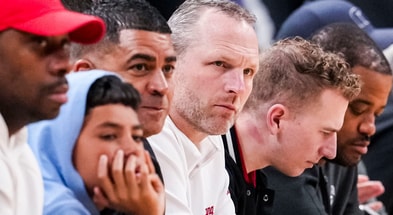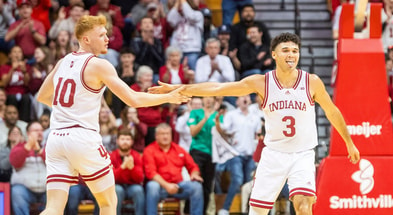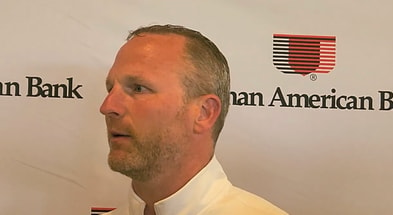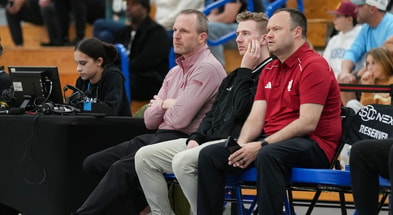Versatility at the core of Darian DeVries’ rebuild at Indiana

When Darian DeVries stepped to the podium at Assembly Hall this spring, he didn’t promise banners or instant glory. Instead, he offered something that felt rare in the era of chaotic roster turnover.
He offered a plan.
The new Indiana basketball coach talked about building a team — not just collecting talent — and about crafting a modern identity rooted in one central trait: versatility.
“You have to build a team, and a team has to be able to fit together, play together, win together, function together,” DeVries said during his introductory press conference.
So far, that philosophy has been more than just talk.
The 2025–26 Indiana roster, filled primarily through the transfer portal, reflects a clear commitment to positionless basketball. The Hoosiers have size, shooting, ball movement and defensive flexibility — a full transformation from the more rigid, post-centric system of recent years.
But DeVries’ pursuit of versatility isn’t limited to transfers. It’s central to how he’s recruiting high school prospects as well, signaling a long-term blueprint for sustainable success.
In building this year’s team, DeVries has added a mix of players who can pass, shoot and defend across multiple positions. Seven of the 11 players currently on scholarship are 6-foot-6 or taller, and many are capable of playing two or even three different spots on the floor.
Among the most notable additions is 6-foot-7 guard Tucker DeVries, the coach’s son. A transfer from West Virginia, he averaged 14.9 points, 4.9 rebounds and 2.8 assists per game last year before a shoulder injury ended his season. With his size and skill set, DeVries could play anywhere from shooting guard to small-ball power forward.
Point guards Tayton Conerway, from Troy, and Jason Drake, from Drexel, bring elite assist rates — 36.8% and 23.5%, respectively — and are equally comfortable playing on or off the ball. Last season at DePaul, transfer guard Conor Enright posted an assist rate of 37.8%, ranking 16th nationally. By contrast, only one Indiana player surpassed 20% last season.
Indiana’s ball movement is poised to improve drastically. Five incoming players had assist rates over 21%, compared to just one such player on last year’s roster. Collectively, the incoming players hit 593 3-pointers last season and shot 37.1% from beyond the arc. Eight shot 35% or better from distance.
DeVries’ style will emphasize movement — of both players and the ball. That’s a marked shift from the offense under former coach Mike Woodson, which often leaned heavily on low-post scoring.
TRENDING: How Trent Sisley measures up in Big Ten’s 2025 freshman class
Up front, the Hoosiers have assembled a group of skilled forwards who can operate in space or battle in the paint.
Reed Bailey, a 6-foot-10 transfer from Davidson, shot the ball well and posted a 25.3% assist rate last season. If his shooting carries over into the 2025-26 season, Bailey could play the power forward spot or serve as a stretch five.
Josh Harris, a 6-foot-8 forward from North Florida offers perhaps a bit of floor spacing and switchability, while Sam Alexis, a 6-foot-9, 260-pound Florida transfer, brings physicality on the interior but can also move laterally to guard the perimeter if need be.
That trio gives Indiana flexibility in its lineups. DeVries could look to play two of Bailey, Harris and Alexis at a time, or go smaller without sacrificing much skill or spacing.
The same goes for wings Nick Dorn and Jasai Miles — both around 6-foot-7 with guard skills and defensive versatility. Dorn, in particular, has flashed the ability to guard multiple positions, create his own shot and contribute as a spot-up shooter.
Top 10
- 1New
2025-26 CFP, Bowls
Full schedule, times, TV released
- 2Trending
Super Regionals Odds
Betting lines for each Super
- 3
CFP Title Favorites
Ranking Top 20 to win it all
- 4Hot
Chipper Jones
Calls out Kevin O'Sullivan, Georgia baseball
- 5
Ryan Day
Calls for 4 Big Ten CFP bids
Get the On3 Top 10 to your inbox every morning
By clicking "Subscribe to Newsletter", I agree to On3's Privacy Notice, Terms, and use of my personal information described therein.
Lamar Wilkerson, a 6-foot-5 guard from Sam Houston State, scored 20.5 points per game and shot 44.5% from 3-point range last season. He’s a scoring threat who also has the size to guard up and the playmaking chops to initiate offense when needed.
ON3+: 2027 four-star defensive lineman Reinaldo Perez talks recent Indiana offer
On the defensive end, versatility is just as evident.
DeVries wants switchability and pressure across the board. His roster is filled with wings and guards who can guard multiple positions, with several players boasting the length and foot speed to close out on shooters or body up bigger opponents.
Indiana’s roster construction allows it to defend creatively — switching on the perimeter, scramming mismatches in the post and using length to clog passing lanes. The Hoosiers this season are longer, more mobile and better equipped to defend modern offenses.
While the transfer portal addressed immediate needs, DeVries has made it clear that long-term success will come from player development. He wants to bring in a couple of high school players each year — not as projects, but as versatile contributors who can grow within the system.
His first major high school win came early. Forward Trent Sisley, a four-star from Montverde Academy, reaffirmed his commitment to Indiana following DeVries’ hiring. Sisley shot 64% from the field and 47% from three at the forward spot last season — numbers that align perfectly with DeVries’ pursuit of versatility.
In addition to Sisley, DeVries and his staff have targeted multiple prospects in the 2026 and 2027 classes who fit the same mold: wings with size and length, combo guards who can do it all, and forwards who can stretch the floor and get dirty inside as well.
Length, shooting, playmaking and defensive ability are the pillars of Indiana’s recruiting efforts at the high school level. DeVries isn’t just chasing stars; he’s building a talent pipeline based on team fit and long-term impact.
Indiana has long wrestled with its past — a program steeped in tradition but often unsure how to move forward. In Darian DeVries, the Hoosiers may have found someone who respects that tradition but refuses to be bound by it.
The players he’s added are unselfish. They’re interchangeable. They move the ball, shoot it well and guard with intensity. From his coaching staff to his recruiting board, everything about DeVries’ approach is deliberate.
And the word that defines it all? Versatility.
If DeVries has his way, it won’t just be a buzzword in Bloomington. It will be the identity that powers Indiana back to national relevance.
Not yet a member of TheHoosier? Take advantage of our launch with On3 and join our community! Just $1 for your FIRST MONTH and then 50% off the rest of your FIRST YEAR! Join here.

